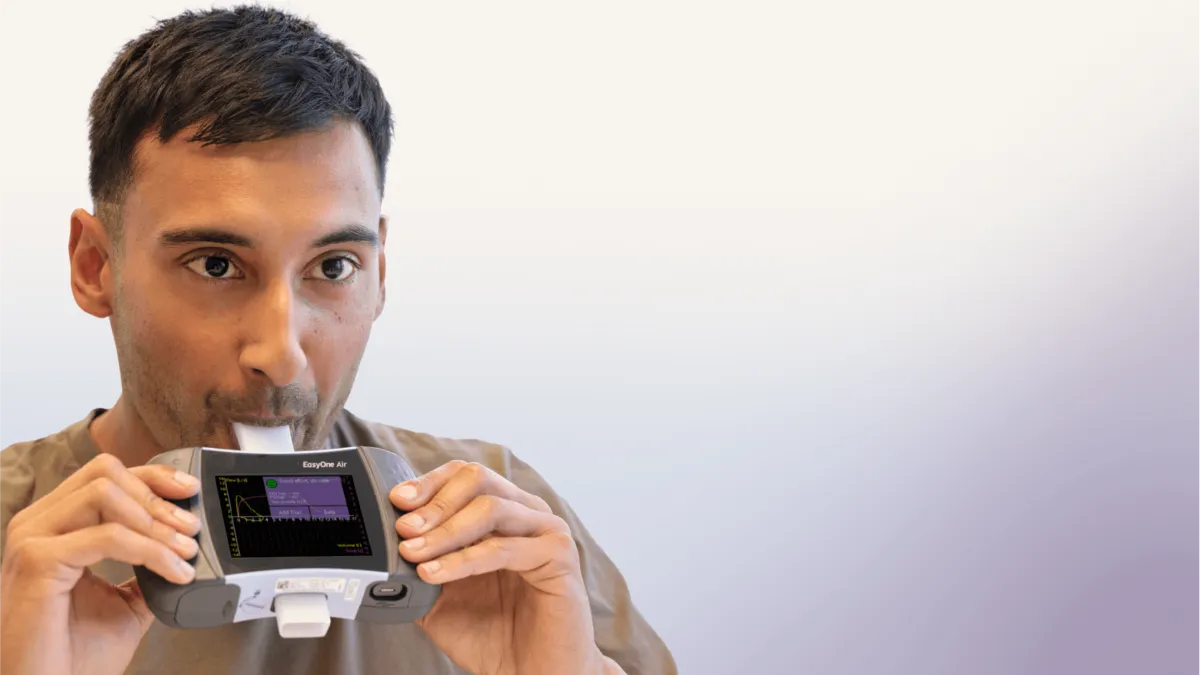The link between the heart and the lungs

You’re aware that your heart pumps blood and your lungs help you breathe but did you know that your heart and lungs work together? The circulatory and respiratory systems are more closely related than you might realize. Here’s why.
The heart & lung connection #
Your lungs and heart make a team, ensuring oxygen gets to the rest of the body. Oxygen-depleted blood makes its way into the right side of the heart from the body. From there, the blood travels to the lungs to pick up oxygen. After the blood is full of oxygen, the left side of the heart pumps the oxygenated blood out to the rest of the body, making sure every organ, tissue, and cell gets the oxygen it needs.
(Fun fact: It takes 16 seconds for oxygenated blood to travel from the heart to the toes and back!)
Since the lungs team up with the heart, breathing problems can arise when the lungs or the heart are not functioning correctly.
Heart and lung conditions present as shortness of breath, low oxygen saturation, fatigue, palpitations, dizziness, and fainting.
Problems related to both the lungs and heart include:
- asthma
- emphysema
- bronchitis
- pulmonary hypertension
- sleep apnea
- heart arrhythmias
- chronic obstructive pulmonary disease (COPD)
- heart failure
Two common conditions, COPD and heart failure, frequently coincide. Let’s look at this relationship.
COPD and heart failure #
Heart failure and COPD patients typically share common risk factors, such as smoking and a sedentary lifestyle. These conditions together are related to worse outcomes than when only one exists.
Facts about COPD and heart failure:
- COPD is significantly associated with increased mortality and hospitalization in patients with heart failure1
- COPD affects about 1/3 of patients with heart failure2
- Women who have COPD & heart failure have a 15% higher risk of early death than men2
When the lungs don’t function correctly, it puts added stress on the heart. COPD is associated with hyperinflation of the lungs. With hyperinflated lungs, airflow becomes limited, increasing pressures in the cardiovascular system, negatively affecting how the heart works, resulting in decreased cardiac output.3 In other words, when lungs don’t breathe properly, the heart fails to pump enough oxygenated blood to meet your body’s needs.
If you receive a diagnosis of heart failure or COPD, it’s crucial to make changes, like exercise and quitting smoking, to help improve your outcome. In addition to lifestyle changes, it’s also vital to monitor your lung function.
Lung function testing for COPD & heart failure #
You might have heard of pulmonary function testing for COPD, but heart failure patients also benefit from lung function tests.
Spirometry in heart failure
Research shows that the FEV1 can improve future risk stratification and determine prevention strategies in patients with chronic, and stable heart failure.
FEV1, forced expiratory volume in one second, is a parameter measured during a lung function test. FEV1 measurements show the amount of exhaled air during the first second of a forced breath.
DLCO in heart failure
DLCO, diffusing capacity of the lungs for carbon monoxide, is a lung function test measuring how well the lungs transfer gases from inhaled air into the blood.
DLCO helps predict mortality in patients with heart failure and is needed before a TAVR procedure (transcatheter aortic valve replacement). DLCO is also used to monitor lung damage as a result of pulmonary toxicity.
Lung function testing is crucial for anyone with COPD or heart failure. Lung function tests like spirometry and DLCO help your provider develop a treatment plan that’s right for you.
Click here to learn more about DLCO or spirometry.











